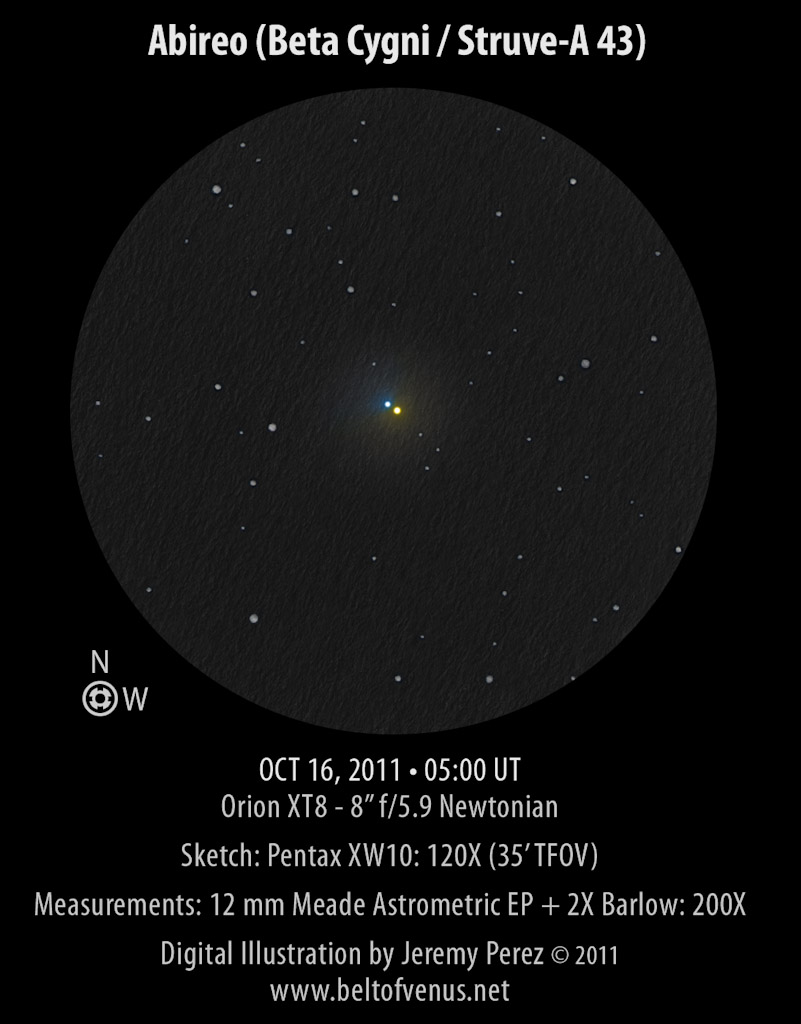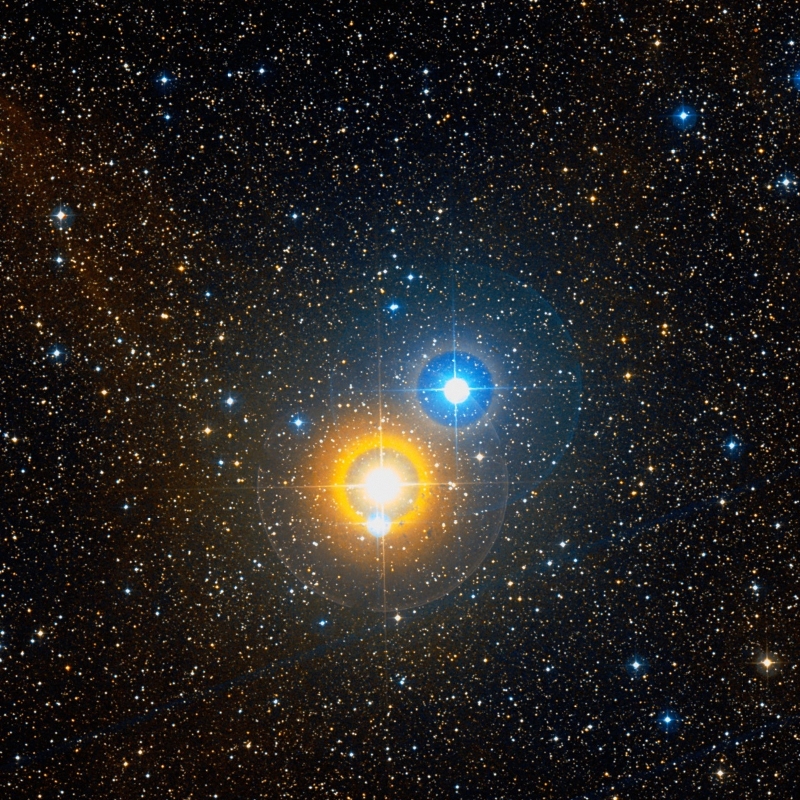Color-contrast binary stars
Posted: Sat Mar 16, 2013 9:07 pm
The most famous of all color-contrast binary stars is undoubtedly Albireo, also known as Beta Cygni. However, the binary is "paler" than you might think. The primary is a star of spectral class K3II, and this particular spectral class ought to ensure that the star would be rather red, with a B-V index of at least +1.5. Instead, however, the B-V index of the primary is only +1.08, about the same color as Pollux! That's really quite pale for a K-type bright giant. The reason for the diluted color of the K-type giant is that it has a hot companion, which orbits so close to the red giant star that it can only be detected spectroscopically. But this hot companion is of spectral type B0.5V and undoubtedly very blue, and its light dilutes the color of the primary of Albireo to a pale yellow hue.
As for the visible blue companion, it, too, is rather pale as blue stars go. It has a B-V color index of -0.095. That's blue, but not strikingly so. To me, therefore, Albireo is a double star consisting of a pale yellow primary and a pale blue secondary, and to me this means that Albireo isn't so great!
No, my own favorite color contrast pair - or rather, triple - is 30 and 31 Cygni. 31 Cygni is a star of spectral class K2II. This star, too, appears to have a hot unresolved spectroscopic companion, but even so, its B-V index is redder than the B-V index of the primary of Albireo: +1.270 for 31 Cygni versus +1.08 for Albireo.
However, 31 Cygni has a visible companion too, and this star is bluer than the blue component of Albireo: -0.133 versus -0.095 for Albireo.The color contrast is simply more impressive here than for Albireo!
Fascinatingly, 30 Cygni, a star of spectral class A5, is located close to the 31 Cygni pair. It can be seen in the same telescope field. The B-V index of 30 Cygni is +0.100, which means that it is not just bluer than the red component of 31 Cygni, but it is also visibly "paler" or "less blue" than the blue component of 31 Cygni! How fascinating!
Here is a color-enhanced picture of 30 and 31 Cygni. 31 Cygni is the yellow star, and 30 Cygni is the (too) blue star. The blue component of 31 Cygni can barely be seen in teh lower part of the yellow halo of 31 Cygni.
Ann
As for the visible blue companion, it, too, is rather pale as blue stars go. It has a B-V color index of -0.095. That's blue, but not strikingly so. To me, therefore, Albireo is a double star consisting of a pale yellow primary and a pale blue secondary, and to me this means that Albireo isn't so great!
No, my own favorite color contrast pair - or rather, triple - is 30 and 31 Cygni. 31 Cygni is a star of spectral class K2II. This star, too, appears to have a hot unresolved spectroscopic companion, but even so, its B-V index is redder than the B-V index of the primary of Albireo: +1.270 for 31 Cygni versus +1.08 for Albireo.
However, 31 Cygni has a visible companion too, and this star is bluer than the blue component of Albireo: -0.133 versus -0.095 for Albireo.The color contrast is simply more impressive here than for Albireo!
Fascinatingly, 30 Cygni, a star of spectral class A5, is located close to the 31 Cygni pair. It can be seen in the same telescope field. The B-V index of 30 Cygni is +0.100, which means that it is not just bluer than the red component of 31 Cygni, but it is also visibly "paler" or "less blue" than the blue component of 31 Cygni! How fascinating!
Palomar Observatory/STScI/WikiSky
Ann


